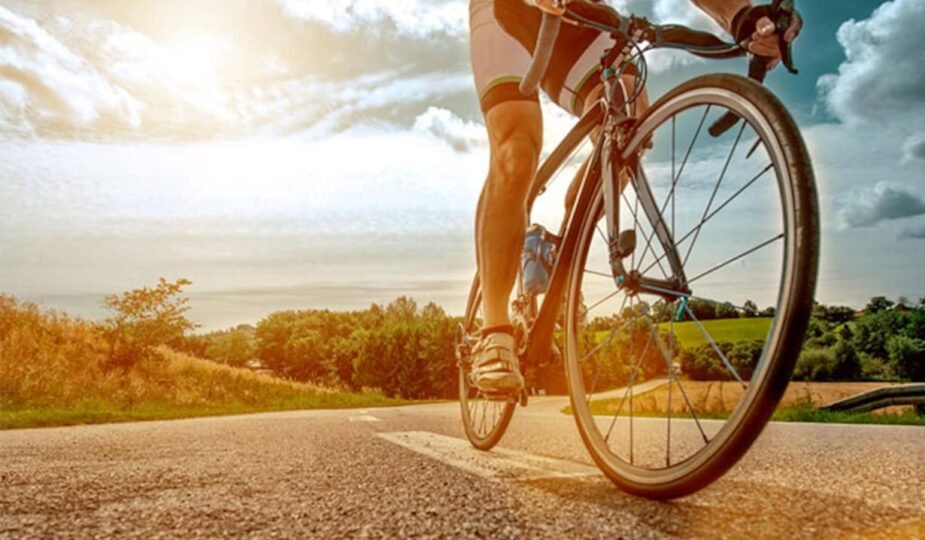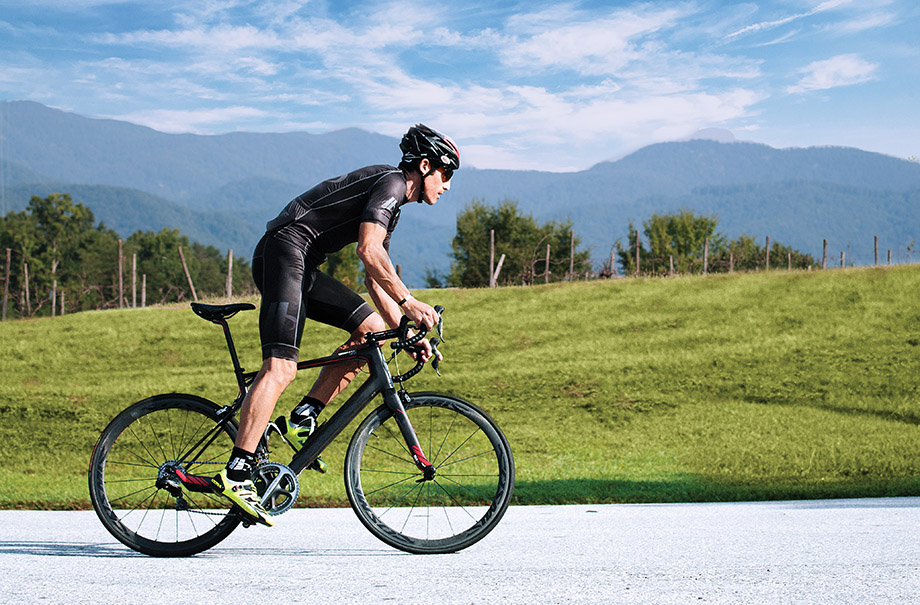
Does Cycling Help to Burn Thigh and Belly Fat?
Cycling offers numerous advantages when it comes to weight loss. Not only can cycling burn calories, but it also helps to tone your thighs and help you to lose belly fat.
When you cycle, you engage different muscle groups in your legs, which can help to tone the muscles in your thighs. Additionally, cycling can also help to target the abdominal muscles, helping to reduce belly fat.
However, cycling for weight loss will only work if you maintain a calorie deficit – eating fewer calories than you burn on an ongoing basis. You can do this by increasing the intensity of cycling and eating a healthy and balanced diet.
To learn more about cycling to burn thigh and belly fat, continue reading.
Cycling for Fat Loss
Cycling can be an excellent form of exercise and weight loss tool all in one. How many calories you burn during each cycling session depends on factors like age, fitness level, and mileage covered – but cycling definitely helps!
But there are steps you can take to help make sure your weight loss efforts succeed. According to research, endurance cycling at moderate speed has been shown to burn about 500 calories an hour of riding.
To attain fat loss with cycling, you need to complement it with dieting and lifestyle changes. Increase your protein consumption and limit processed, fried, and sugary foods.
Where Does Cycling Tone?
Cycling provides an effective workout for numerous muscle groups, especially in the legs. Here are some core muscle groups where cycling tones.
Bum
Cycling is an excellent way to stay in shape and burn calories. It helps to tone your gluteal muscles. When you pedal, you use your leg muscles which include the glutes. The resistance levels and intensity levels can also play a role in shaping your glute muscles. It will give firmness to your buttocks and enhance the appearance of your bum.
Thighs
Cycling is a wonderful form of exercise and is an effective way to tone numerous muscles, including those in your thighs. Cycling engages all of your quads (thigh muscles), glutes, hamstrings, and calves. Pushing down on a pedal and pulling it up is one of the most efficient ways of toning thigh muscles without overstraining joints. It will help to burn excess fat in your thighs and tone the muscles.

Hamstrings
Cycling can help strengthen and tone the hamstrings, an important leg muscle. They run from your hip all the way back along your thighs up to just below your knee, providing ample opportunity for cycling exercise to tone them. Walking or standing does not engage the hamstrings at all; however, when cycling, they become heavily engaged. To increase hamstring strength during cycling, focus on performing circular strokes where equal force is applied throughout the pedaling motion.
Calves
Cycling is especially useful for increasing muscle tone while decreasing fat storage. Your calves are essential muscles when riding a bicycle, supporting both your legs during pedal strokes and helping stabilize your upper body. Your calf muscles are engaged during every pedal stroke, much like those of the quadriceps. However, their work becomes significantly intensified when you focus on pointing downward on the down stroke and pulling upward on the upstroke.
Shin Muscles
Cycling will strengthen both your shin muscles, which help push off from pedaling, and your hamstrings,. It stabilizes knee movements during pedal descent. Regular cycling uphill can help you burn fat and build lean muscle mass quickly – especially around your glutes, hamstrings, calves, and shin.
Does Cycling Help to Lose Belly Fat?
Waistlines are one of the primary areas where extra weight accumulation occurs. Moreover, research shows it contributes significantly to heart disease. However, you can reduce your waistline by burning excess abdominal fat.
Cycling can help to burn belly fat as it strengthens and tones the entire body. Moreover, increasing metabolism while simultaneously improving cardiovascular fitness.
American Council on Exercise (ACE) suggests cycling for at least 30 minutes each day to maximize weight loss, though, for a more intense workout, you could opt to extend this duration further.
Fasted cycling can be an excellent way to lose weight and reduce belly fat. This practice can be particularly effective if you have a commute to work or school. As the long trip provides an opportunity for physical exercise.
Set yourself a goal of 30 minutes of fasted cycling each morning on your commute, which equates to one hour of moderate-intensity cardio. Strength training may further boost the results of your fat-burning sessions.
Diet is also key for losing belly fat. A diet rich in fruits, vegetables, lean proteins, and whole grains will help increase calorie burn and shift extra weight away from your abdomen. Additionally, to maximize the results it is possible to incorporate supplements with fat burning effect.
Does Cycling Burn Fat on Thighs?
Yes, cycling helps to burn fat on your thighs. It is an effective muscle-toning exercise that targets different muscle groups. Cycling works the slow-twitch muscles needed for endurance while simultaneously strengthening fast-twitch ones for power output.
Riding your bike will tone and strengthen the quadriceps (thigh muscles), calves, hamstrings, and hip flexors, as well as strengthen your core. It is essential in supporting lower body movements.
According to research, the thighs consist significant amount of muscle mass and fat. Cycling with intense efforts and energy bursts may stimulate muscle growth in the thighs, thereby helping you to lose thigh fat.
Conclusion
It is scientifically proven that cycling can help you to burn calories and lose weight in conjunction with diet and lifestyle changes. The constant pedaling motion when cycling helps to target your thighs as well as abdomen muscles. Thereby helping you to shape your thighs and lose belly fat. However, weight loss with cycling takes time and consistent effort. To get the most out of your cycling, it is wise to use a cycling app that can help you keep track of your progress.









